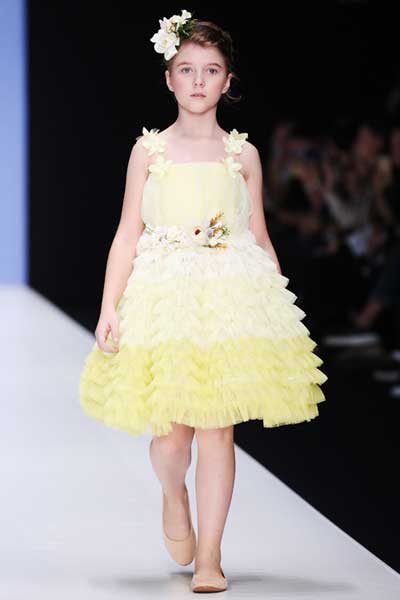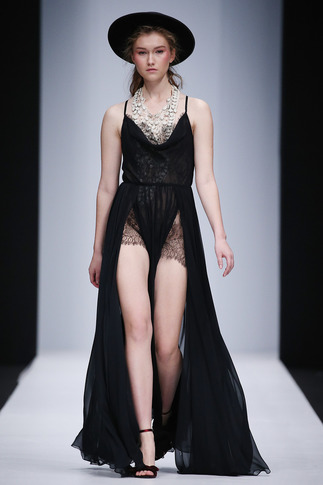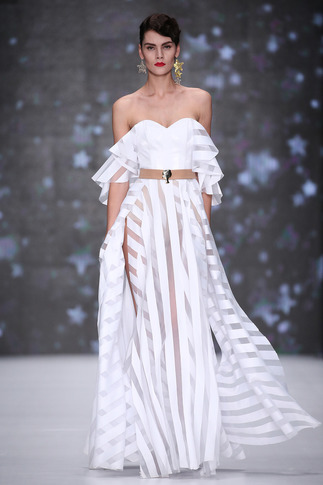FW
Indonesia wants Mitsubishi to pour in more money in the garment sector and forge partnerships with local industries. The Japanese giant is seen as having the potential to boost competitiveness and productivity among Indonesia’s manufacturers. Indonesia is revitalizing its textile industry by boosting the production capacity of rayon fiber.
Rayon has become the new basic material for textiles and Indonesia looks forward to producing rayon fiber from forest pulp in large quantities. Mitsubishi may also invest heavily in the petrochemical sector as its subsidiary, Asahi Glass, which operates in Indonesia under the name Asahimas Flat Glass, has started to expand its caustic soda and glass factory.
Mitsubishi is looking to expand its business in infrastructure and the automotive sector as well as consumer goods, such as food products. Its investments in textiles and textile products have contributed 1.16 per cent to the country’s gross domestic product. Indonesian shipments of textile and textile products rose 8.2 per cent in 2016.
Indonesia is also inviting Chinese investors. China’s investment, especially in the automotive sector, is growing rapidly. There are two Chinese vehicle factories that are already showing good sales results. China sees Indonesia as a potential production and export base. In addition a very large domestic market already exists.
Cotton futures had their largest percentage gain in more than a year as forecasts call for near-freezing temperatures for Texas. Fears of an early freeze could cut into yields of cotton in Texas. Texas is the largest cotton growing state in the US. India’s decision to increase minimum support price for its cotton could push some business back to US exports. Price supports were above expectations.
About 30 per cent of the cotton was harvested in Texas as of the week ended October 15. If bolls are mature and ready to open, the freeze shouldn’t have much of an impact on yields. But if a green boll gets a freeze, it will never open and will rot.
Cotton for December was up 3.1 per cent, on track for its largest percentage gain since July 12, 2016. Monday’s bounce should lure index funds to sell out of long positions early as they roll out of positions in the December contract. Expectations of a record cotton yield this year in the US may be dashed. The main reason is the hurricane damage to crops. Another reason is strong competitor shipments. The downgrade reflected reductions to expectations for both harvested area and yield.
Julie Driscoll has been appointed the managing director of London trade show Pure London. She was previously the show’s portfolio director. Working with the Pure team, its partners, suppliers and exhibitors, Driscoll will drive the next step in Pure’s evolution as the event unveils the new We Are London campaign for its February show.
The next edition of Pure London will take place from February 11 to 13. The event will host 800 brands across eight sectors and is expected to attract over 17,000 UK and international visitors. The campaign centers on the show’s location in the heart of the British industry, and invites the public to celebrate the carefully curated global line-up, described as inspirational and diverse.
To help exhibitors and visitors prepare for the show, organisers have launched a brand new website featuring a host of new tools, including a brand wish list, a live chat function and instant messaging to make appointments at the show.
Visitors to the show can add brand profiles and will receive tailored recommendations based on their interests and behavior, while exhibitors can now enjoy a quicker and easier process for creating their profile and uploading imagery.
Brands can also benefit from unlimited product tagging, which should result in better search and filtering functions.
Australian Fashion Chamber is merging with the Council of Textile and Fashion. Australian Fashion Chamber is a key fashion industry body. The Council of Textile and Fashion is the peak body for Australia’s clothing, textile and footwear industries.
The new industry body will benefit from having established offices in the country’s two largest cities and a combined membership that spans the entire Australian fashion and textile industry value chain. Sydney-based AFC boasts of 90 designer members, while the Melbourne-based CTF has several hundred members, ranging from textile manufacturers to fashion tech startups through to large retailers.
AFC benefits from some federal backing for its Australian Designers Abroad pop-up multi brand showrooms staged in Paris and New York during the collections seasons. Both not-for-profits are privately funded through memberships.
The proposed union of the two organizations is an incredibly exciting opportunity for Australian fashion, with the prospect to really expand and build on both organizations’ achievements to a great future. It is also seen as representing a turning point for the Australian industry and comes at a timely moment to strategically shape its future across the whole spectrum of design and textiles.
A name for the merged group is yet to be decided on but the Australian Fashion Council could be one of the possibilities.
Global fashion brands are looking to source more clothing items from Africa to reduce their reliance on Asia-based manufacturers. Kenya and Ethiopia have emerged as favorite locations as multinationals diversify away from countries such as Bangladesh, one of the largest exporters of textiles.
The bulk of Kenya’s textiles are exported to the United States under the African Growth and Opportunity Act (Agoa) agreement that allows for duty-free imports of select items from low-income countries in the continent. Increased contract manufacturing in the country is expected to boost exports in the textile industry whose earnings and production have dropped significantly from a peak in the 1980s.
Over the past couple of years, serious interest in African countries as a major sourcing destination for apparel has grown. With the recent renewal of African Growth and Opportunity Act through 2025, which allows certain countries in sub-Saharan Africa duty-free access to the US market, the buzz around Africa has become even louder.
Major companies including PVH, VF Corp, H&M, Primark and Tesco began sourcing a portion of their garments from this region a few years ago and it quickly made its way to the forefront as a region of opportunity for many apparel brands.
On the second day of Mercedes Benz Fashion Week Russia, L'Erede, a children’s fashion brand, presented its collection. Outwear, sweaters, caps, hoodies with inscriptions highlighted the first part of the show. Next came summer blouses, jumpers and dress in shades of turquoise, pink and yellow. Flowers were the main decorative element of the second part of the runway show. At the event finale was a line of party dresses for children featuring embroidery, flounces, hoops, multilayer skirts and glittering embroidery shaped as swallows and flowers.

In the new season,Vadim Merlis went for an experiment. The foundation of his previous collections has always been clothing in a retro romantic style. Part of the current collection was designed in line with the sporty chic trend: hoodies and T-shirts were combined with silvery and golden eco leather skirts. Male tracksuits were made of red velvet while T-shirts had leather sleeves. Stripes and plaid came along with bright ribbon belts. The total look featured ultra short male shorts in fuchsia, which was the absolute major color of the collection. Dense multicolored tights, bright fancy flounces - all describe the new collection from Vadim Merlis.

Designer Igor York created backpacks especially for the fashion week. Since 2011, he has been making hand-made exclusive male and female bags, brief cases, clutches, tablet bags, belts, and banknote holders.

Trident has successfully established its presence in the bath linen segment. Incorporated in 1990 and based in Ludhiana, the company has evolved from being a solitary yarn and paper manufacturer to one of the largest, state-of-the-art and integrated home textile manufacturers globally.
Trident’s spinning division produces cotton, compact and blended yarns. It has the largest spinning installation at single campus in India. Presently, Trident has an installed capacity of 5.5 lakh spindles and 6,464 rotors with a capacity to produce 90,000 tons a year of cotton, compact and blended yarn. The division also has a dyed yarn capacity of 6,825 tons a year. While nearly 35 per cent of the produce is consumed by the bath and bed linen units, the rest is sold in the domestic and international markets. The manufacturing units are equipped with state-of-the-art technology sourced from world class manufacturers.
The terry towel division accounts for a major part of the revenues in the home textile segment. The state-of-the-art production facilities include spinning, wide-width air jet and jacquard weaving, soft flow dyeing and fully-automated cutting and sewing of the towels. The division is equipped with machineries sourced globally, currently averaging a capacity utilisation of around 50 per cent.
Seven APEC members -- the US, China, Japan, the Republic of Korea, Hong Kong, China, Malaysia, and Singapore -- are among Vietnam’s top 10 export markets. Vietnam’s footwear exports to the US in the first nine months were up 13.7 per cent compared to the same period last year and accounted for 12 per cent of the total value of Vietnamese goods to the US. Textile and garment exports were up 9.5 per cent compared to the same period last year and accounted for nearly 30 per cent of the total export value to the US.
The US is the largest market for Vietnamese textile and apparel imports. In 2016, the export turnover of this commodity group to the US was up 4.6 per cent against 2015, making up 48 per cent of the total textile and garment export turnover of the whole country. As Vietnam’s traditional seafood export markets are increasingly demanding, the Korean market appears to be more open to Vietnamese exporters.
Over the first eight months of this year, the export value of aquatic and fishery products to the Republic of Korea increased by 27 per cent compared to the same period last year. Trade liberalisation and trade facilitation in the APEC have opened up great opportunities for the business community in Vietnam, especially small- and medium-sized enterprises.
Bangladesh may give Accord a six month extension. The five-year time frame of the European buyers’ and retailers’ platform comes to an end on May 31, 2018. Two reviews of Accord’s progress – one in January 2018 and another in May 2018– will be conducted by a committee which will be constituted with representatives of the government, brands, International Labor Organisation and global trade union federations.
During the additional six-month period the name of the initiative would be Transitional Accord. During the extension period, Accord would work independently. After the Rana Plaza building collapse in April 24, 2013, that killed more than 1100 people, mostly garments workers, EU retailers formed the Accord on Fire and Building Safety in Bangladesh to improve factory safety in Bangladesh while North American retailers formed the Alliance, undertaking a five-year plan, which set timeframes and accountability for inspections and training and worker empowerment programs.
Both platforms conducted safety inspections in more than 2,300 readymade garment factories from where they procure products. The Alliance for Bangladesh Workers’ Safety does not plan to continue in Bangladesh beyond its tenure. If any factory seeks financial assistance for remediation, Accord facilitates negotiation over the issue between the lead buyers and manufacturers.
A textile park is coming up in Telangana. This fiber-to-fabric integrated textile cluster will be built on 1,200 acres. The Kakatiya mega textile park is the first industrial park project to reach the ground-breaking stage in three years after the formation of the state. The project also assumes significance due to its location in the cotton-rich Warangal region which was once a hotbed of Naxalite activities in Telangana.
A state-of-the-art infrastructure featuring common effluent treatment and zero-liquid discharge facilities besides ready-built factory sheds will be developed in this park at an investment of more than Rs 1000 crores. There is also a provision to expand the park to 2000 acres in future. Further, a slew of incentives and subsidies will target investments in the textile sector.
The plan is to make this one of the largest textile parks in the country. Over a dozen companies, including a big textile firm from South Korea, have come forward to set up their manufacturing operations in the park with a combined investment of over Rs 3,900 crores. Telangana is one of the largest producers of long staple cotton with a production of around six million bales per annum. The upcoming textile park will enhance the scope for value addition to the cotton crop within the state.












